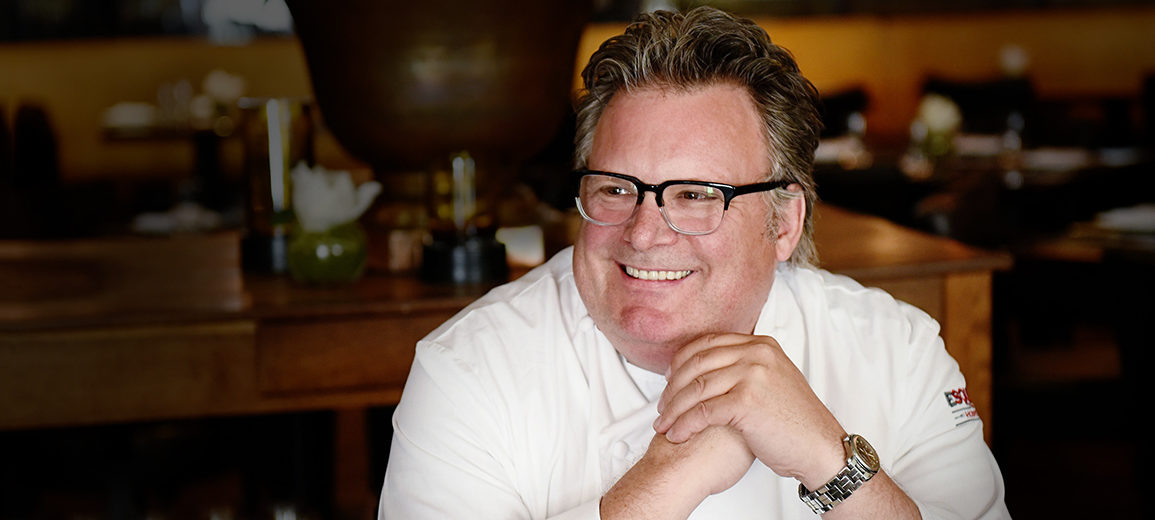Chef’s Roll has teamed up with Chef Daniel Barron, the Texas Beef Council and Wüsthof for an epic 365 Day Dry Aged Beef Project. We will be dry aging “107” USDA prime rib eyes for an entire year, while sampling the results at 30, 60, 90 and 180 day intervals. The project will culminate in a beef vertical dinner to include all intervals with the 365. Our goal is to both educate and inspire chefs around the world to dry age beef safely #365DRYAGEDBEEFPROJECT.
As part of our 365 Day Dry Aged Beef Project, we tapped beef expert Chef David Burke for his insight and opinions on dry-aging. Burke is one of the leading pioneers in American cooking today for his introduction of revolutionary products and cooking techniques. He is a chef, entrepreneur, inventor and owner of a Dry-Aging Patent granted by the US government.
You’ve been recognized/honored nationally and internationally throughout your career from Japan’s Nippon Award to being inducted to the James Beard Foundation. Awards and honors aside, what’s been your biggest accomplishment to date?
Biggest accomplishment to date, is the ability to watch the chefs I’ve trained turn into amazing chefs, and the success of my three children.
The United States patent was awarded to you for the unique process by which you use pink Himalayan salt to dry- age steaks anywhere from 28 to as long as 100 days. How did you come up with this process?
I came up with the process trying to create a dry aged flavor spray, and in the process, I discovered that the number one flavor profile in the beef which I sent to the lab was cardboard. I went back and saw that the cardboard laid out on the cooler floor for blood and fat drippings was being absorbed by the meat. I realized that anything in the cooler was part of what the meat will be absorbing, because the moister was evaporating and the meat absorbing it. This led me to believe that salt would slightly cure and kill the bacteria, mold and mildew that grows in meat. Subsequently around the same time I was working with a pink Himalayan sea salt company, so the idea of covering the whole cooler with Himalayan sea salt blocks came easy to me.
After dry-aging the meat in a process of various time frames the meat was sent to the lab. The results came back that our dry-aged beef had substantially less bacteria count than beef dry-aged with no pink himalayan sea salt. The Himalayan sea salt formed a controlled atmosphere that let the meat dry-age in a very pristine way.
The end result was that the salt not only fermented the meat, but it also didn’t let any bacteria to grow which is what spoils meat. The meat was absorbing the moister of the salt blocks and in result was seasoning the meat internally. A 5-inch thick steak being seasoned internally – imagine that. The whole point of dry-aging beef is to season the beef.
Why salt? Is there a difference between using Pink Himalayan to other types of salts?
We age with Himalayan salt because it’s the cleanest salt with minerals from the air and sea, untouched by pollutants.
Have you tried dry-aging a steak for 365 days?
I have dry aged steaks for 365 days and up to 10 years
How many days would you say is the sweet spot to dry-aging a rib-eye steak?
I would say the sweet spot is 4- to 55 days of aging, but I prefer 55 days. I like to dry age rib-eyes longer because of their fat content.
Are there any new techniques on dry-aging you’ve recently discovered?
Yes there are, but I am not ready to disclose.
Finally, what’s your favorite method of cooking a dry-aged steak? (charcoal, oven, skillet, sous vide, etc.)
My favorite method is to saute in rendered dry aged beef fat, because using charcoal or a grill would take away the dry-age flavor as well as compete with the flavor. Short Ribs, are also great to dry-age. I am not a fan of sous vide with dry-age steaks and in general.


